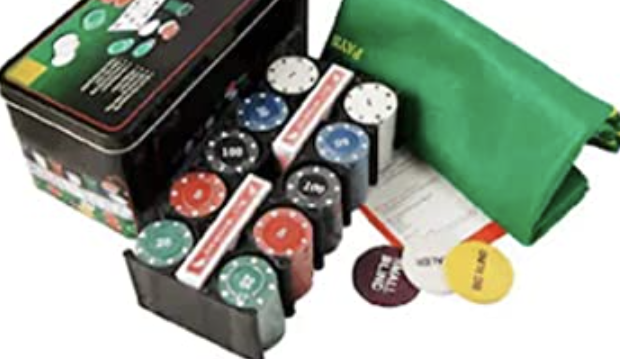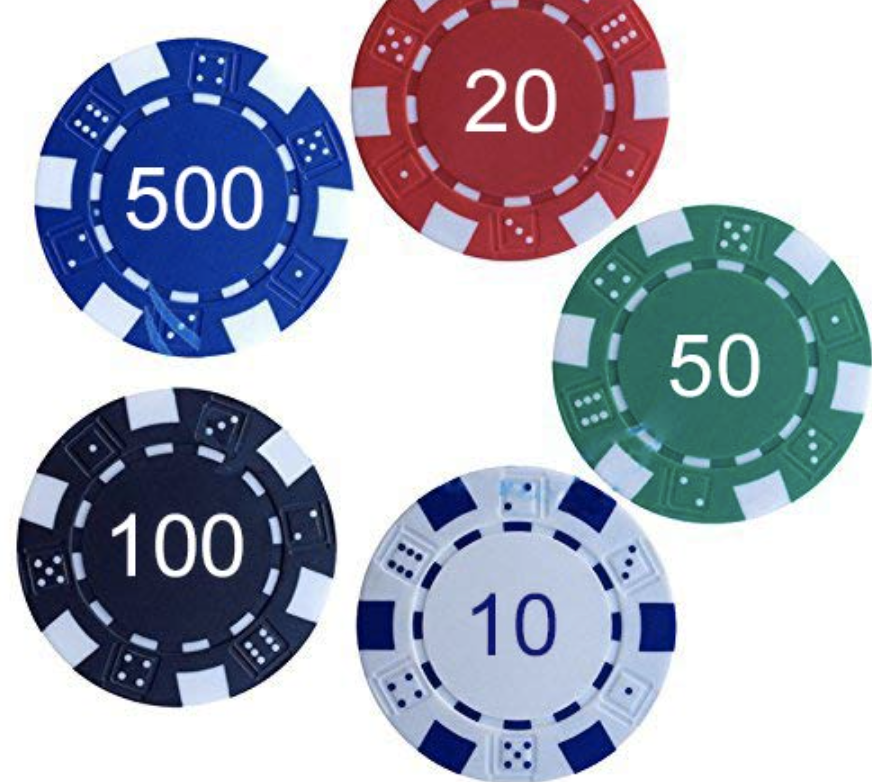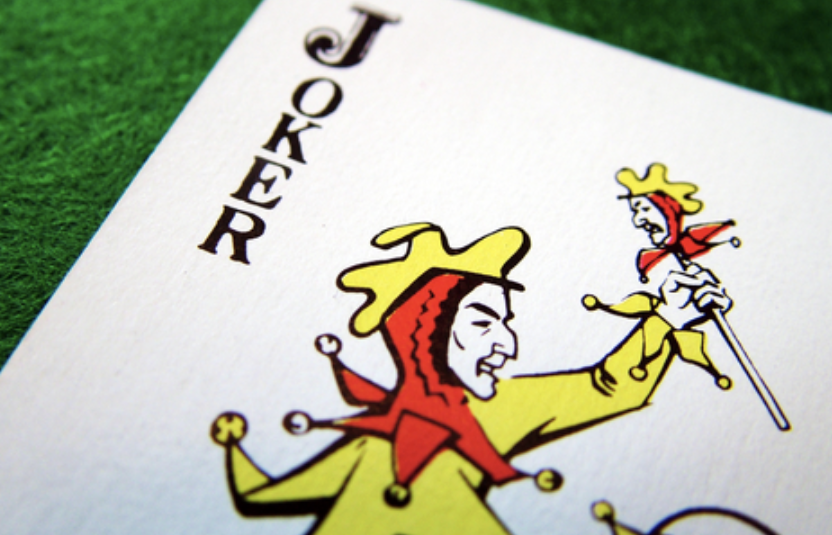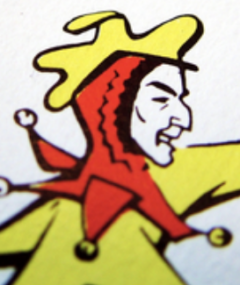Germans have been bluffing since the fifteenth century when they played a game called “Pochen.” It subsequently evolved into a French model, the “Poque,” and was transported to New Orleans and performed on Mississippi riverboats.

Poker was improved over the 1830s and given the name. The essential guideline of pulling cards to strengthen a player’s hand was introduced during the Civil War. Stud Poker emerged. Poker is played in numerous casinos. You may play poker for matchsticks or pennies in a casual setting.
Poker is a game where chance plays a big part, but it also takes a lot of skill, and every player controls their destiny.
The Pack
Usually, one or two jokers are added to the standard 52-card deck. Although traditionally played with a single pack of cards, modern games often employ two packs of opposing colors to expedite play in clubs and among the best players. While one pack is being dealt, the other is shuffled and readied for the next round of play.

Here are the instructions for preparing two packs:
While the new deal is being made, the previous dealer will collect all the cards from the pack he dealt, mix them, and place them to the left. When it’s time to deal again, the shuffled deck is passed on to a new dealer. In situations involving two packs, the player on the left of the dealer is the one who often slices the pack.
In clubs, it is standard practice to regularly shuffle and deal new cards to any player who requests them. When additional cards are introduced to either pack, you should break the seal and cellophane in full view of the other players.
Card Scoring
Poker in a plethora of different ways. Still, a player familiar with the hand consists of five cards, except for a few game variations. The different poker hand combinations are ranked from five to a kind (highest) through no pair or nothing (lowest):
Five of a Kind: The best possible poker hand can only be achieved in games when one or more cards is a wild card. Some combinations of five of a kind include two queens and three wild cards or four 10s and a wild card.
Straight flush: A straight flush is the best possible hand without wild cards and using just the standard deck. A straight flush is a hand that consists of the 10, Jack, Queen, King, and Ace of Spades or the 10, Jack, Queen, King, and Ace of Hearts. The greatest possible straight flush consists of the A, K, Q, J, and 10 of the same suit, hence called a royal flush or straight flush. About 1 in 650,000 times will get this hand.

Four of a Kind: The next best hand is a four-of-a-kind, which comes just behind a straight flush. Four aces or four 3s are two examples. What the fifth, unmatched card is is irrelevant.
Whole House: Three cards of one rank and two of another, like three 8s and two 4s or three aces and two 6s, make the Full House a striking hand.
Flush: A flush has five cards with the same suit but not all in the same order. Q, 10, 7, 6, and 2 of clubs are an illustration.
Straight: A straight is five consecutive cards that are not all from the same suit. A prime example is 9 8 6 5.
Three of a Kind: This combination of three identical cards plus two more cards, each of a different rank, such as three jacks, a seven, and a four, is also referred to as three of a kind.
Two Pairs: This hand consists of two pairs of identical cards, two pairs of different cards, and any fifth card of a different rank, such as Queen, Queen, Seven, Seven, or Four.
One Pair – The lone pair in this often occurring hand, with the other three cards all being of different rankings. Ten, ten, K, four, and three are all numbers.
No Pair – The “nothing in it” claim is common, and this phenomenon is common. There is no sequence among the five cards, and none of the cards are all the same suit or all of the same rank. If multiple players do not have a pair, the hands are ordered by the value of their highest card. Because of this, a hand with an ace as the high card beats a hand with a king as the top card.
In poker, two hands with the same card value but different suits are linked. In the event of a tie, all players get an equal share of the prize money. When two players have a high pair, the winning hand is determined by the rating of the next card. For instance, a score of 9-9-7-4-2 would beat a score of 9-9-5-3. You would also use the fifth card to choose between two hands with the same pair. If we compare Q, Q, 6, 6, J will come out on top.
Betting
There will be more betting periods throughout each Poker deal, during which the participants may wager on their hands. Poker’s core competency is minimizing deficits with weak hands and increasing wins with strong ones.
To begin a hand of poker, each player may be required to “ante” (first contribute) more chips to the pot before the cards are presented.
A new betting interval (or round) begins whenever a participant wagers on additional chips. After a player bets, the players to their left have the option to “call” (match) the bet by placing an equal number of chips in the pot, “raise” (place more chips in the pot than were bet), or “drop” (“fold”), in which case they do not place any pots chips, discard hands, and are eliminated from further betting til the next bet.
All of a player’s chips in the current pot are removed from play when they drop. You must fold if you are unwilling to match the preceding player’s bet in chips.
The betting round is over when all slots have been made or lost. This occurs when each wager bet or folded the same number of chips as the previous player. For each Poker transaction, there are at least two betting rounds. A “showdown” occurs after the last break; the remaining players display their hands face up. The winner is the player with a great poker hand.
If a person bets or raises and no other players call without showing their hand, the player automatically wins the pot. Therefore, bluffing is a part of Poker, and the most outstanding hand does not necessarily win. Playing Poker with the ability to bluff is a big part of its appeal.
A player may “check” if they do not desire to make a wager but would like to continue playing. A player is effectively “betting nothing” when this occurs. If no other player has placed a wager in the current betting period, the checking player may do so.
Once another player has made a bet, you have two options: call or fold. An individual who checks has the option of increasing the stakes in a game after another player has made a raise. This is known as “sandbagging,” and it’s generally accepted so long as it hasn’t been explicitly banned. If every player checks during a round, the betting round ends, and everyone still in the pot keeps their chips.
The game’s regulations stipulate that one player must make the first wager at the beginning of each betting round. Everyone must wait their turn before checking, betting, or dropping, and the turn to bet passes clockwise around the table from player to player.
Understanding When To Place a Bet
Poker hand rankings are based on mathematical principles. The odds of a player winning with a hand that is less likely to occur in the deck increase as the rank of that hand rises. A player may expect a pair of tens or better roughly once every 21 hands, while a straight flush is only given out once every 65,000.
Only gamble if you have what you believe is the most delicate hand possible unless you’re trying to bluff. Knowledge of what makes a good hand, a fair hand, and a terrible hand is essential for every Poker player who wants to wager wisely. Poker hands and potential combinations may be seen visually in a standard deck of playing cards.
The Kitty
The players may form a “kitty” or standard pot if they all agree to it or have a simple majority. When there is more than one raise, the kitty is often augmented by “cutting” (removing) the lowest value chip in the pot.
Each participant contributes equally to the kitty, which is used to buy supplies like playing cards and refreshments. After the game, all remaining players will split the pot evenly. When a person quits a Poker game before it has concluded, unlike in other games like Pinochle, they do not get to keep the chips they contributed to the pot.
Chips
Poker chips are the standard currency for the game. A minimum of 200 chips should be available for a game with seven or more participants. The white chip is the unit worth the smallest amount that may be staked.

The red (or other colored) chip is worth five whites, and the blue chip is worth ten whites. Each participant “buys in” at the beginning of the game by buying a certain amount of chips. Typically, the buy-in is the same for everyone in the game.
Banker
The banker should be a single individual who keeps track of the chips and how many have been given to each player or how much money has been exchanged for chips. Participants are forbidden to engage in off-the-books swaps or transactions of any kind; instead, those who have excess chips may trade them in for credit or cash at the banker’s desk, while those who are short must get chips from the banker.
Betting Limits
Betting limits may be set in several ways. There ought to be a cap; otherwise, a player with a lot of money would have an unfair edge. The restriction should not be increased or decreased during play. Some standard limit sets are as follows.
Fixed Limit
A maximum number of chips may be bet or raised, for example, 2, 5, or 10. Typically, this restriction shifts as the game progress: In Draw Poker, the betting limit may double from five to 10 following the draw. For example, if the betting limit in Stud Poker is five for the first four rounds, in the fifth and final rounds, it rises to 10, and when a player gets a pair or better, the limit is frequently increased to twenty.
Pot Limit
Bet and raise limits are based on the current chip count of the pot. Put another way, if a player raises, they may put in the number of chips necessary for the caller to stay in the pot. For example, if there are six chips in the pot and a four-chip bet is put, the pot size will increase to ten chips. When the pot reaches 14 chips, the following player must call with four. After that, they may make a 14-chip raise. Even in the pot limit game, there should be a maximum limit, such as 50 chips.
Table Stakes
Each player’s limit is based on how many chips they currently have in front of them. If a player has ten chips, his highest bet is ten, and he may match any other player’s bet up to that number. Until a player leaves the game, no one may take chips from the table or return them to the banker in exchange for other table stakes. A player may only add to their stack between closing the previous transaction and the beginning of the next deal.
Whangdoodles, Or Roodles
In a fixed-limit game, it is often negotiated that after every firm hand, like an entire house or better, each player will deal one round of jackpots, in which everyone antes twice as much, and the betting limit is also doubled.
Poverty Poker
Any player may only lose a certain amount of chips at a time. Each player starts with one stack; if they lose it, the banker gives them another one without charging them; and in many situations, they may obtain a third stack for free before quitting the game. (A player should be encouraged to play cautiously by restricting the number of free stacks.)
No Limit
The “sky’s the limit” during these sessions, although such games aren’t often played nowadays.
Limits On Raises
The maximum number of raises that may be made at each betting interval in practically all games played today is always three.
Draw & Stud Poker
What variation of poker the participants will play should be decided initially.
Poker’s two primary variations are draw poker and stud poker. All cards are dealt to the players face down in Draw Poker. As the betting round in Stud Poker advances, certain cards are dealt face up so that the other players may see each player’s hand.
The participants should first choose the kind of poker they will play unless the host or a club’s rules have already defined the game. The number of participants and if there are any novice players in the group should both play a role in their choice. It is advised to choose from the following options:
You may play Stud Poker with 2, 3, or 4 people. Since there are often so few participants, only the most seasoned players engage in Draw Poker. These players frequently employ a stripped deck, a pack from which all the deuces (twos) and treys have been removed (threes).
- Any kind of poker, whether Draw or Stud, for 5–8 players
- Five-card stud poker for nine or ten players
More than ten players: One of the games, such as Three-Card Monte or Spit in the Ocean, when only four or five cards are dealt. The remainder of this chapter will discuss each poker variant. Another option with that many participants is simply setting up two tables and running two different games.
Dealer’s Choice
In a Dealer’s Choice poker game, the dealer determines the game’s rules, variation, ante, wild cards (if any), and maximum bet for each hand. However, the dealer cannot demand a higher ante from any player. If a game like Jackpots is chosen, but the betting is not started, the same dealer will deal again, and the betting will begin from the beginning.
Wild Cards
While the majority of poker purists prefer to play without wild cards, several games, mainly Dealer’s Choice, allow for the use of wild cards. The holder may designate a wild card as any card, regardless of rank or suit, such as a fifth queen, or as the card that must mix with the other four cards in a player’s hand to complete a straight or flush. In a poker game, wild cards offer diversity and naturally raise the likelihood of obtaining a rare combination, such as an entire house or a straight flush. These are the standard options for wild cards:
The Joker

Keep in mind that most decks of cards come with two jokers for use in Canasta and other similar games. More and more poker players will use one or both jokers as wild cards.
The Bug
This is the joker, although it’s just somewhat outrageous: It counts as an ace, a card of any suit for a flush, a card of any rank and suit for a straight or a straight flush, or none of the above.
Deuces
One common variation of Draw Poker is known as “Deuces Wild.” Every pair is insane. The joker may function as a wild card in its own right, making for a total of five. With deuces wild, the value of a hand is unaffected by the presence or absence of wild cards. For example, a hand of 10, 10, 2, 2, 2 (five 10s) defeats a hand of 8, 8, 8, 8, 2 (eight 8s and two 8s) (five 8s).
One-Eyed Cards
The other face cards have two eyes, but the king of diamonds, jack of spades, and jack of hearts only display one. It’s common to make one-eyed jacks crazy, but the king of diamonds is seldom chosen for that role.
Low Hole Card
Each player’s lowest “hole” card in Stud Poker, which is the lowest card dealt face down and hidden from view by the other players, is wild. The wild card in Draw Poker would be the hand’s lowest card. When a card of that kind is marked, all cards of that rank in that player’s hand are considered wild; however, just because a card is marked as wild in one player’s hand does not automatically render all cards of that rank wild in all other players’ hands.
Laws And Ethics
Every game should have a documented set of poker rules that serve as the ultimate arbitrator for resolving disputes. There are several regional conventions and preferences; thus, there are no universal poker regulations, but the ones on this site embrace the most current practices of the best games and are encouraged to be adopted. It is customary in the game of poker for any club or group of players to create unique regulations, or “house rules,” to fit their tastes. Any such house rules should, of course, be documented.
Time Limit
The participants should decide on a time limit for when the game finishes before play starts and stick to it. If this rule is broken, enjoyable sessions could ultimately become unpleasant.
For participants to know how many deals are remaining and adjust their strategy appropriately, the host or one of the players would often declare “three more deals” or “through Zane’s deal” when the time for leaving draws near.

